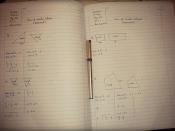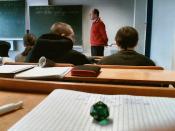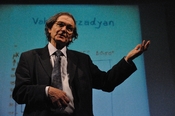Maurits Cornelius Escher is widely acknowledged for his extensive use of distorted geometrical shapes, tessellations and spatial illusions creating a unique art form that was admired by artists and mathematicians. Through these works of art he contributed to the world of math without having any extensive training or high academic achievements, but yet and still his work were exhibitions of mathematical ideas.
Deterring from his father's plans for him to become an architect, M. C. Escher grew a great interest in graphic arts. Obtaining a worldwide reputation, he was presented to the public in an article in Time magazine and had his first exhibit in 1956. Mathematicians accepted his accomplishments in art while envisioning principles of mathematics, even though he had no teachings beyond high school in the subject. M. C. Escher quoted: "At first I had no idea at all of the possibility of systematically building up my figures.
I did not know...this was possible for someone untrained in mathematics, and especially as a result of my putting forward my own layman's theory which forced me to think through the possibilities."( 1958, M.C. Escher,Regular Division of the Plane) His inspirations came from readings he did on many mathematical ideas and with this knowledge, he created projective geometry, structures in plane, Euclidean geometries, paradox and "impossible" figures, and he adopted Roger Penrose's ideas. The bulk of his work surrounds two main areas: logic of space and space geometry.
Physical objects have a spatial relation which is necessary is considered the "logic" of space, when these are disrupted they become visual paradoxes or optical illusions. Maurits understood the relationship between geometry of space and logic of space determining one another. He used to experiment with light and apply it to the logic of space, and when using concave and convex...



Good
Nice job of using the refrences to describe Eschers' past/overall life.
3 out of 3 people found this comment useful.